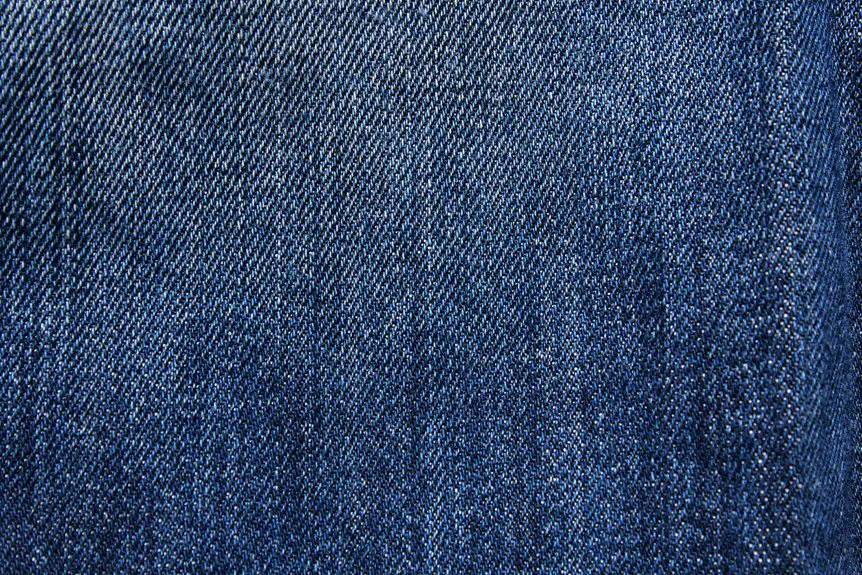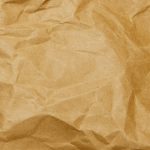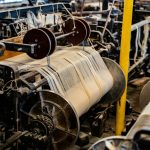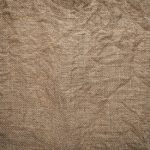If you want a natural fiber that’s stronger, more versatile, and eco-friendly, hemp fabric is the better choice. Hemp feels smoother and lasts longer thanks to its superior tensile strength, while also using less water and absorbing more CO2 during growth. Jute is coarser, heavier, and cheaper, great for rustic items like bags and rugs but less durable. Keep going, and you’ll uncover detailed differences in their environmental impact, uses, and care.
Table of Contents
Key Takeaways
- Hemp fabric is stronger and more durable than jute, making it better for long-lasting and high-performance applications.
- Jute has a coarser texture and heavier weight, suitable for rustic uses like sacks and rugs, while hemp is smoother and more flexible.
- Hemp requires less water and absorbs more CO2, making it more environmentally sustainable than jute, which needs flooded fields.
- Jute is generally more affordable and widely available, whereas hemp costs more due to farming regulations and specialized processing.
- Hemp’s breathability and comfort make it preferable for apparel and home textiles, while jute excels in agricultural and heavy-duty uses.
Origins and Historical Use of Jute and Hemp
Although both jute and hemp have been used for centuries, their origins and historical uses differ markedly.
When you explore hemp, you find it’s one of the oldest cultivated plants, dating back over 10,000 years in Asia. You’d have seen hemp used for making ropes, sails, and even early paper, thanks to its strength and durability.
On the other hand, jute’s history is more recent, with its cultivation primarily in the Indian subcontinent for around 4,000 years. If you’ve handled jute, you know it’s traditionally prized for making sacks, bags, and coarse fabrics.
While hemp’s versatility extended into textiles and industrial applications early on, jute mainly served practical purposes in packaging and agriculture.
Understanding these backgrounds helps you appreciate how each fiber fits distinct roles in history and industry.
Environmental Impact of Jute and Hemp Cultivation
When you compare jute and hemp cultivation, water usage is a key factor to take into account.
You’ll also want to look at how each crop affects soil health and their overall carbon footprint.
Understanding these impacts helps you choose the more sustainable fabric option.
Water Usage Comparison
Because water availability plays a crucial role in sustainable farming, understanding how much water jute and hemp require is essential.
When you compare the two, hemp generally uses less water than jute. Hemp is drought-resistant and can thrive with minimal irrigation, making it a better choice in areas where water scarcity is a concern.
Jute, on the other hand, needs more consistent moisture and often requires flooded fields during cultivation, which increases its water footprint.
If you’re aiming for a fabric with a lower environmental impact related to water, hemp is the more efficient option. Choosing hemp means you’ll conserve water resources while still producing a strong, natural fiber.
Soil Health Effects
Since healthy soil forms the foundation of sustainable agriculture, understanding how jute and hemp affect soil quality is essential.
When you grow jute, you benefit from its ability to improve soil texture and add organic matter as it decomposes. Jute plants have a shallow root system, so they don’t deplete nutrients deeply, allowing the soil to recover quickly for subsequent crops.
On the other hand, hemp has a robust root network that penetrates deeply, breaking up compacted soil and enhancing aeration. This deep rooting also helps with nutrient cycling, making the soil more fertile over time.
Both fibers support soil health but in different ways—jute enriches the surface layer, while hemp improves soil structure beneath. Choosing between them depends on your specific soil needs and crop rotation plans.
Carbon Footprint Analysis
Understanding how jute and hemp influence soil health sets the stage for evaluating their broader environmental impact, especially their carbon footprints.
When you choose hemp, you’re opting for a crop that absorbs more CO2 per hectare than most plants, thanks to its fast growth and dense foliage. Jute also captures carbon effectively but generally lags behind hemp in total carbon sequestration.
Both crops require minimal synthetic fertilizers and pesticides, reducing emissions tied to chemical production. Plus, their cultivation demands less water than cotton, lowering overall environmental strain.
However, hemp’s versatility allows for more efficient use of byproducts, which can further reduce waste and emissions.
Physical Properties and Texture Comparison
When you compare jute and hemp fabrics, you’ll notice distinct differences in their physical properties and texture that influence their uses. Both fibers are natural but offer unique tactile experiences.
Jute and hemp fabrics each bring unique textures and qualities that shape their ideal applications.
- Texture: Jute feels coarse and rough, making it ideal for rustic bags and rugs. Hemp, on the other hand, is smoother with a softer finish, which suits clothing and home textiles better.
- Weight: Jute fabric tends to be heavier and stiffer, while hemp is lighter and more flexible, giving you more comfort and versatility.
- Appearance: Jute has a golden-brown hue with a matte look, whereas hemp appears more muted with a slight sheen, offering a cleaner aesthetic.
Understanding these differences helps you choose the fabric that best fits your project’s needs.
Durability and Strength of Jute vs. Hemp Fabric
You’ll want to contemplate how jute and hemp compare in tensile strength when choosing between them.
Think about how each fabric handles wear and tear over time. Understanding their longevity in everyday use can help you pick the best option for your needs.
Tensile Strength Comparison
Although both jute and hemp fabrics boast natural strength, hemp generally offers superior tensile strength, making it more durable for heavy-duty applications.
When you compare the two, hemp stands out because:
- Hemp fibers have higher breaking strength, so they resist stretching and snapping better under pressure.
- Hemp’s thicker, more resilient fibers contribute to longer-lasting fabric, especially in demanding uses like bags or upholstery.
- Jute, while strong, tends to be less consistent in tensile strength, which can limit its performance where maximum durability is essential.
If you need fabric that holds up to stress and heavy use, hemp is usually the better choice.
It’s designed to endure more strain, giving you confidence in its toughness over time without sacrificing natural appeal.
Wear Resistance Factors
Wear resistance plays an essential role in determining how well jute and hemp fabrics hold up under regular use.
When you choose between these fabrics, consider that hemp generally offers superior abrasion resistance due to its longer, stronger fibers. This means hemp fabric can withstand frequent friction without wearing thin quickly.
Jute, while sturdy, tends to be coarser and less flexible, making it more prone to fraying and surface damage over time. If you need a fabric that maintains its integrity through rough handling or constant rubbing, hemp is often the better option.
That said, jute still performs adequately for lighter use where heavy wear isn’t a concern. Understanding these wear resistance factors helps you pick the fabric that best suits your specific needs in durability and strength.
Longevity in Usage
When you rely on fabric for long-term use, the durability and strength of jute and hemp become essential factors to take into account.
Hemp fabric generally outperforms jute in longevity due to its higher tensile strength and resistance to wear. Here’s what you should keep in mind:
- Tensile Strength: Hemp fibers are stronger, meaning your fabric can handle more stress without tearing.
- Moisture Resistance: Hemp resists moisture better, reducing the risk of mold and weakening over time.
- Abrasion Resistance: Hemp withstands friction better, making it ideal for high-use items.
While jute is strong and affordable, hemp offers superior durability for long-lasting applications.
If you want fabric that stands the test of time, hemp is often the better choice.
Biodegradability and Compostability of Both Fibers
Because both jute and hemp are natural fibers, they break down more easily in the environment compared to synthetic materials.
When you dispose of jute or hemp fabric, you can expect them to biodegrade relatively quickly under the right conditions. Both fibers compost well, returning valuable nutrients to the soil without leaving harmful residues.
If you’re looking to reduce your environmental footprint, choosing either fabric means you’ll avoid the long-lasting waste associated with plastics.
Hemp tends to break down slightly faster due to its less dense fiber structure, but the difference is minimal.
Common Applications for Jute Fabric
Jute fabric finds its way into a variety of everyday products thanks to its strength and affordability.
When you’re looking for natural, eco-friendly materials, jute’s versatility makes it a solid choice.
Here are three common applications you’ll often encounter:
- Sacks and bags: Jute is widely used for making sturdy sacks and shopping bags, perfect for carrying groceries or storing goods.
- Home décor: You’ll find jute in rugs, curtains, and upholstery, adding a rustic, natural touch to interiors.
- Agricultural uses: Farmers rely on jute for crop protection and erosion control, as it’s biodegradable and durable.
Common Applications for Hemp Fabric
You’ll find hemp fabric in everything from clothing and home décor to industrial products.
Its strength and eco-friendliness make it a popular choice for sustainable textiles.
Let’s explore how hemp fits into these different uses.
Apparel and Textiles
Although hemp fabric has been used for centuries, it’s gaining fresh popularity in apparel and textiles today. You’ll find hemp’s durability, breathability, and eco-friendliness make it ideal for modern clothing and accessories.
Here are three common uses you might appreciate:
- Casual and outdoor wear: Hemp’s strength and moisture-wicking properties keep you comfortable during hikes or casual outings.
- Eco-conscious fashion: Designers love hemp for creating sustainable shirts, pants, and jackets that last longer than cotton counterparts.
- Accessories: From bags to hats, hemp’s sturdy texture and natural look add unique style and functionality.
Choosing hemp in your wardrobe not only supports sustainability but also gives you versatile, long-lasting clothing that feels good and performs well.
Home Décor Uses
When you want to refresh your living space with durable and eco-friendly materials, hemp fabric offers excellent options for home décor. You can use hemp for upholstery, giving your furniture a natural, textured look that stands up to daily wear.
Hemp curtains not only provide privacy but also let in a soft, filtered light while being easy to clean. Throw pillows made from hemp add a rustic charm and feel comfortable against your skin.
Hemp rugs are another great choice; they’re tough, sustainable, and bring an earthy warmth to any room. By choosing hemp fabric, you’re investing in long-lasting style that’s gentle on the environment, making your home both beautiful and eco-conscious without sacrificing quality.
Industrial and Eco Products
Because hemp fabric combines strength with sustainability, it’s become a popular choice for various industrial and eco-friendly products.
When you choose hemp, you’re investing in durability and environmental responsibility. Here are three common industrial and eco applications you might find interesting:
- Biodegradable Packaging: Hemp’s natural fibers break down quickly, making it ideal for eco-conscious packaging solutions.
- Automotive Components: Car manufacturers use hemp fabric for door panels and insulation, thanks to its lightweight and sturdy nature.
- Construction Materials: Hempcrete, a mixture of hemp fibers and lime, offers an eco-friendly alternative for insulation and building.
Using hemp fabric in these areas not only reduces reliance on synthetic materials but also helps you support a greener, more sustainable future.
Cost Factors and Market Availability
Since you’re considering both jute and hemp fabrics, understanding their cost factors and market availability is essential.
Jute tends to be more affordable because it’s widely cultivated in countries like India and Bangladesh, where production costs are lower. You’ll often find jute products readily available in many markets, especially for packaging and home decor.
Hemp, on the other hand, usually costs more due to stricter regulations, specialized farming, and processing requirements. While hemp’s popularity is growing, it’s still less common and may be harder to find in some regions.
However, hemp’s durability and eco-friendliness can justify the extra expense. Ultimately, your choice may depend on your budget and how accessible these fabrics are in your local or online markets.
Care and Maintenance Tips for Jute and Hemp Fabrics
Although jute and hemp fabrics are both natural and durable, they require specific care to maintain their quality and appearance.
To keep your fabrics looking great, follow these simple tips:
- Avoid machine washing: Use gentle hand washing with cold water and mild detergent to prevent weakening the fibers or causing shrinkage.
- Dry naturally: Lay the fabric flat or hang it in a shaded area to air dry; avoid direct sunlight, which can fade colors and damage fibers.
- Store properly: Keep your jute or hemp items in a cool, dry place, away from moisture and pests, to prevent mold and deterioration.
Future Trends in Sustainable Fiber Usage
As more consumers demand eco-friendly options, sustainable fibers like jute and hemp are gaining momentum in fashion and home textiles.
You’ll see innovations improving the softness and durability of these fabrics, making them more appealing for everyday use. Brands are also blending jute and hemp with other natural fibers to create versatile, sustainable textiles.
Plus, advances in eco-friendly processing techniques reduce environmental impact even further.
You can expect increased adoption of jute and hemp in sectors beyond clothing, such as upholstery and packaging.
As awareness grows, you’ll find more affordable, stylish options made from these fibers.
Frequently Asked Questions
Can Jute or Hemp Fabric Cause Allergic Reactions?
You might experience allergic reactions from jute or hemp fabric if you have sensitive skin. Both can cause irritation or itching, so you should test a small area first before using them extensively.
How Do Jute and Hemp Fabrics Compare in Color Retention?
You’ll find hemp fabric retains color better over time, resisting fading even with frequent washes. Jute tends to lose vibrancy quicker, so if long-lasting color matters, hemp’s the smarter choice for your projects.
Are Jute and Hemp Fabrics Suitable for Upholstery?
You can use both jute and hemp fabrics for upholstery, but they’re better suited for low-traffic areas. Hemp’s durability stands out, while jute may wear faster, so consider where your furniture will get the most use.
Can Jute or Hemp Fabric Be Blended With Synthetic Fibers?
You know what they say: “Birds of a feather flock together.” You can blend jute or hemp with synthetics, enhancing durability and flexibility, giving you fabrics that combine natural charm with modern performance for versatile uses.
Which Fiber Is Better for Making Biodegradable Packaging?
You’ll find hemp fiber better for biodegradable packaging because it’s stronger, more durable, and breaks down naturally. It offers excellent moisture resistance, making your packaging sturdy while still eco-friendly and compostable.
- Identifying Nonwoven Fabrics: A Simple How-To Guide - July 12, 2025
- The Top Uses for Nonwoven Fabrics You See Every Day - July 12, 2025
- Nonwoven Interfacing 101: A Guide for Every Sewer - July 12, 2025







